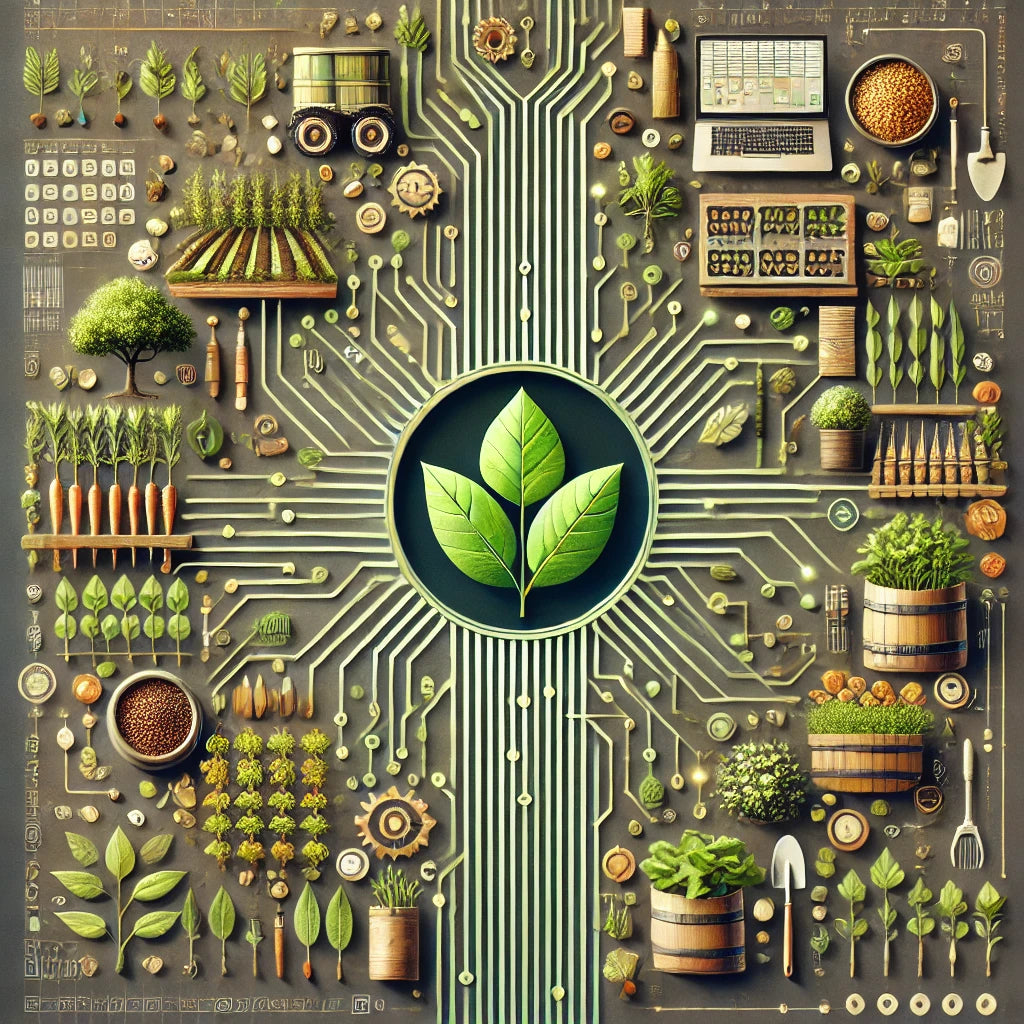Technology Meets Agriculture
The integration of technology into agriculture is revolutionizing the way we grow food, especially in urban environments. From smart irrigation systems and IoT-enabled sensors to hydroponics and vertical farming solutions, these innovations are helping farmers maximize efficiency, minimize waste, and overcome challenges such as limited space and unpredictable weather.
In this section, we’ll explore cutting-edge technologies available to Texas growers, tools for small-scale and urban farming, and how innovation is driving the future of sustainable agriculture.
6.1 Smart Farming Tools and IoT Integration
The Internet of Things (IoT) has transformed traditional farming into a data-driven practice, allowing growers to monitor and optimize their operations in real time.
Smart Sensors and Monitors
-
Soil Moisture Sensors
- Example: Ecowitt Soil Moisture Sensor
- Benefits: Tracks soil water levels to prevent overwatering and ensure optimal hydration for plants.
-
Environmental Sensors
- Example: Davis Weather Stations
- Benefits: Measures temperature, humidity, and wind conditions to optimize growing environments.
-
Smart Fertilizer Dispensers
- Example: CropX Smart Fertilizer Technology
- Benefits: Delivers precise amounts of nutrients based on soil data, reducing waste and improving yields.
6.2 Vertical Farming and Hydroponics
As urban spaces become denser, vertical farming and hydroponic systems offer solutions to grow food efficiently in limited areas.
Vertical Farming Systems
-
Tower Garden by Juice Plus+
- Website: Tower Garden
- Overview: A self-contained vertical system for growing vegetables and herbs in small spaces.
- Why It’s Great for Texas: Ideal for urban patios and balconies where traditional gardening space is limited.
-
Freight Farms
- Website: Freight Farms
- Overview: Shipping container farms equipped with hydroponic systems and climate controls.
- Use Case: Perfect for commercial growers wanting a scalable urban farming model.
Hydroponic Kits
-
AeroGarden
- Website: AeroGarden
- Overview: Countertop hydroponic systems for growing herbs and greens indoors.
- Benefits: Easy to use, making it perfect for beginners.
-
General Hydroponics EcoGrower
- Website: General Hydroponics
- Overview: Advanced hydroponic systems for serious growers.
- Features: Customizable options for vegetables, fruits, and herbs.
6.3 Automation and Robotics
Automation reduces labor and increases efficiency, especially for urban farming systems.
FarmBot
- Website: FarmBot
- Overview: An open-source, robotic farming machine that automates planting, watering, and weeding.
- Use Case: Great for small-scale urban farms and educational settings.
AgriTech Robots
- Example: Naio Technologies’ Weeding Robots
- Benefits: Automates weeding and soil preparation, reducing manual labor.
6.4 Agritech Software and Apps
Technology doesn’t stop at hardware—software solutions are equally transformative for urban farming.
Garden Management Apps
-
GrowVeg Garden Planner
- Website: GrowVeg
- Features: Helps design and plan garden layouts, track planting schedules, and manage crop rotations.
-
Planta App
- Website: Planta
- Features: Provides reminders for watering, fertilizing, and pruning based on plant needs.
Farm Management Platforms
-
FarmLogs
- Website: FarmLogs
- Use Case: Tracks soil health, weather patterns, and crop performance for mid- to large-scale operations.
-
Agrivi
- Website: Agrivi
- Overview: Farm management software with advanced analytics for yield optimization.
6.5 Blockchain in Agriculture
Blockchain technology is creating new opportunities for transparency, traceability, and trust in food systems.
Use Cases in Texas Agriculture
-
Traceability:
Blockchain can document a crop's journey from seed to table, ensuring transparency in sourcing and production. -
Smart Contracts:
Farmers can use blockchain-based contracts to secure fair pricing and automate transactions with buyers.
Real-World Example
-
IBM Food Trust
- Uses blockchain to enhance food safety and streamline supply chains.
6.6 Renewable Energy and Water Solutions
Sustainability is a key focus for urban and rural growers alike, with renewable energy and water-saving technologies playing a critical role.
Solar-Powered Irrigation Systems
- Example: Solar Drip Irrigation by Futurepump
- Benefits: Reduces energy costs and supports off-grid farming operations.
Rainwater Harvesting Systems
- Example: Rainwater Harvesting by BlueBarrel
- Use Case: Collect and store rainwater for irrigation in drought-prone areas.
6.7 Educational Initiatives in Agritech
Learning about agritech is as important as adopting it. Texas is home to several programs and initiatives that educate growers on integrating technology into their operations.
Texas A&M AgriLife Smart Farming Program
- Website: AgriLife Smart Farming
- Focus: Educates farmers on using IoT devices, automation, and data analytics.
Urban Harvest Agritech Workshops
- Website: Urban Harvest
- Offerings: Hands-on workshops teaching hydroponics, vertical farming, and smart gardening techniques.
6.8 Future Trends in Agritech
The future of agriculture is being shaped by advancements that promise even greater efficiency and sustainability.
-
AI-Driven Crop Management:
- AI systems analyze data to predict crop yields, detect diseases, and recommend actions.
-
Drones in Urban Farming:
- Use cases include aerial mapping, pest control, and precision spraying.
-
CRISPR for Sustainable Crops:
- Gene-editing technology to develop drought-resistant and high-yield crops tailored to Texas’s climate.
Conclusion: Embracing Innovation
Technology and innovation are critical for overcoming the challenges of urban farming, from limited space to climate unpredictability. By adopting smart tools, automation, and sustainable energy solutions, Texas growers can maximize productivity and lead the way in creating resilient food systems.

